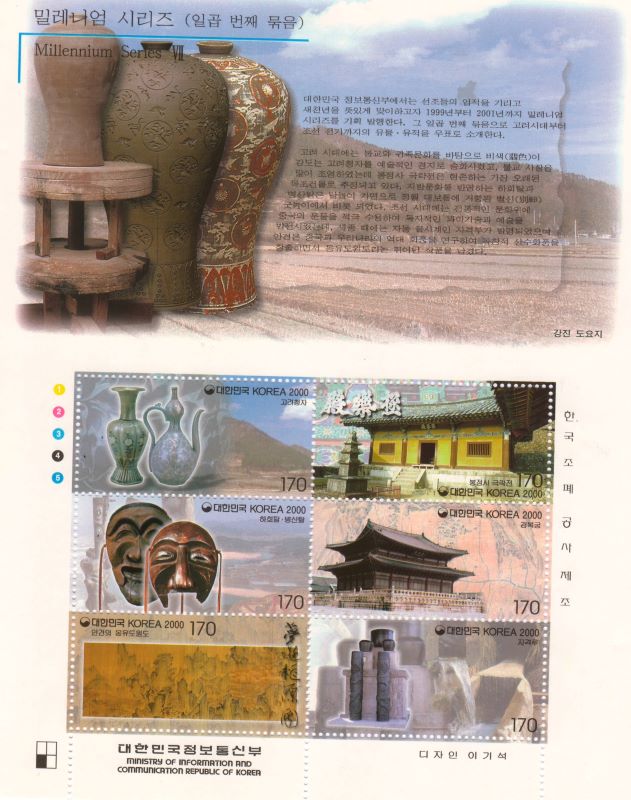WORLD BUDDHIST STAMPS e.GALLERY
bringing the buddhist world at the comfort of your home
| Millennium Series V11 - South Korea | |
Stamps illustration:
Koryo Celadon: Goryeo ware refers to all types of Korean pottery and porcelain produced during the Goryeo dynasty, from 918 to 1392, but most often refers to celadon. Celadon techniques were first introduced from China; Goryeo potters established a native style by the 12th century
The Nirvana Hall of Pongjungsa Temple : Origin of the spiritual power of Butsugan-ji is the Nirvana Buddha. The largest class of the Nirvana Buddha (45 meters long) is placed horizontally and is watching warmly over people in Sapporo and one's ancestors at Butusgan-ji.
Hahoetal masks: They are the traditional Korean masks worn in the Hahoe Pyolshin-gut t'al nori ceremony (Hahoe byeolsingut talnori) dating back to the 12th century. They represent the stock characters needed to perform the roles in the ritual dance dramas included in the ceremony. The masks originated in the Hahoe Folk Village and Byeongsan Village, North Gyeongsang Province, South Korea. They are counted among the treasures of South Korea, and the oldest Hahoe mask is on display in the National Museum of Korea. The Hahoetal masks are considered to be among of the most beautiful and well known images representing Korean culture.
Gyeongbokgung: Also known as Gyeongbokgung Palace or Gyeongbok Palace, was the main royal palace of the Joseon dynasty. Built in 1395, it is located in northern Seoul, South Korea.
“Dream Journey to the Peach Blossom Land “ : A digital copy of 'Dream Journey to the Peach Blossom Land' painted in 1447 by An Gyeon is on display at the Korea University Museum. "Dream Journey to the Peach Blossom Land" is a painting showing a dream about paradise that Prince Anpyeong (1418-1453), third son of King Sejong, had one day. |
|
| Issued Country | Korea |
| Issued Year | 2000 |
| Category | Buddhist Architect Buddhist Landscape |
| Type | Commemorative/Special Stamps |
